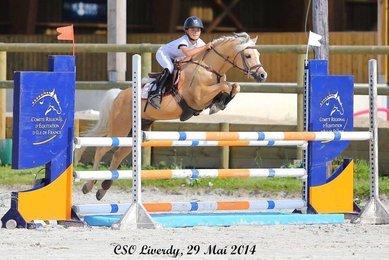
Continent: Europe
Country: United Kingdom
Weight: 250 – 350 kg
Height: 127 – 137 cm
The Welsh Pony Section B originates from Wales, where it was developed from the Welsh Mountain Pony (Section A) to produce a larger, more elegant riding pony.
Its creation resulted from selective crossbreeding between traditional Welsh ponies and Arabian and Thoroughbred stallions during the 19th and early 20th centuries.
The goal was to preserve the hardiness, liveliness, and robustness of the mountain pony while refining its gaits and conformation, thus creating a show and sport pony suitable for children and young riders.
The historic cradle of the Welsh Pony Section B lies in Wales, especially in the mountainous and hilly regions where Welsh ponies developed for centuries. The most prestigious breeders are still located there, directly tied to the Welsh Pony & Cob Society (WPCS).
The breed is widely present throughout the UK, where it enjoys great recognition. Breed shows and major events such as the Royal Welsh Show are key to its promotion and selection.
The French Welsh stud-book is managed by the Association Française du Poney et Cob Gallois (AFPCG). The breed is bred across the country, particularly in Normandy and the Pays de la Loire, regions with a strong pony tradition.
The Welsh Pony Section B is renowned for its refined conformation and expressive gaits. In breeding, it passes on nobility, harmony, and presence, qualities highly valued in sport and show ponies.
Thanks to its Arabian and Thoroughbred bloodlines, the Welsh B has contributed to the creation of many European sport ponies. It passes on:
Born from a strictly managed stud-book, the Welsh B maintains a valuable genetic variability for the future of ponies. Its ability to combine hardiness with elegance makes it indispensable in crossbreeding programs.
Welsh ponies descend from hardy little horses that lived since antiquity in the rugged mountains of Wales. Their endurance and adaptability were shaped by centuries of surviving in a harsh environment.
In 1901, the foundation of the Welsh Pony & Cob Society (WPCS) marked a decisive step. The stud-book was established to preserve and select the different types of Welsh ponies. Breeders soon distinguished several sections by type, size, and use.
The Section B was officially created in the early 20th century. It resulted from careful crosses between the Welsh Mountain Pony (Section A) and refined breeds such as the Thoroughbred and Arabian. The goal was to produce a larger, more elegant, and versatile pony, while keeping the strength and intelligence of the original ponies.
By the mid-20th century, the Welsh B gained major success in UK breed shows. Its beauty and sporting ability caught the attention of foreign breeders. It was exported massively to Europe, North America, and Australia, becoming a reference in the development of modern sport ponies.
Today, the Welsh Pony Section B remains faithful to its Welsh heritage, while adapting to the needs of modern equestrian sports and youth riders. Selection seeks to maintain a balance between elegance, performance, and breed identity.
The Welsh Pony Section B is known for its intelligence and sensitivity. Adaptable to various contexts, it is a trustworthy companion for both children’s riding and shows. It usually has an even temperament, though some individuals may show a more spirited side.
This pony is naturally energetic, with a lively spirit that makes it suitable for both sport and driving. Yet, it remains manageable, distinguishing it from other ponies that can be overly nervous.
The Welsh B is a sociable animal, well integrated in herd life. Its robustness allows it to coexist easily with other ponies or horses, provided there is enough space and a clear social hierarchy.
Hardy and solid, the Welsh B enjoys a long lifespan, often active well beyond 20 years. Loyal and affectionate, it forms a close bond with its rider, reinforcing its reputation as a reliable pony.
The Welsh Pony Section B continues to attract attention for its elegance and versatility. Its role in youth equestrian sports (show jumping, dressage, hunter, driving) ensures high demand in countries such as France, the Netherlands, and Germany.
Thanks to its genetic qualities, the Welsh B is increasingly used to improve:
This reinforces its role as an improving pony and secures its importance for the future of pony breeding.
Breeders and the stud-book emphasize the conservation of Welsh type: expressiveness, elegance, and fluid gaits. This vigilance ensures the breed does not drift toward an overly “sporty” model at the expense of its traditional identity.
The growth of recognized stud-books abroad, participation in major international shows, and increasing use in youth equestrian sports all contribute to strengthening the global reputation of the Welsh B.
The Welsh Pony Section B inherits the traditional hardiness of Welsh ponies. It is generally sound, with excellent resistance to weather and strong adaptability to different lifestyles (pasture, stabling, part-board).
This pony is renowned for its long life expectancy. Many remain active well beyond 20 years, and some reach 30 years in good health, making it a long-lasting partner for sport or leisure.
Like other small ponies, the Welsh B may be prone to:
No major hereditary disease has been identified in Section B ponies. The rigorous selection of the Welsh Pony & Cob Society helps maintain a healthy breed standard.